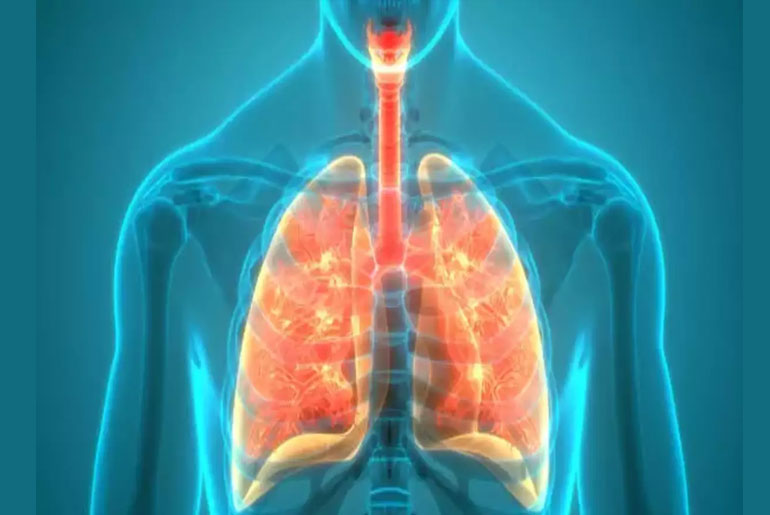Recent research presented at the European Respiratory Society International Congress in Milan, Italy, has revealed that the color of phlegm (sputum) in individuals suffering from bronchiectasis, a lung condition, can provide valuable insights into the degree of inflammation in their lungs and predict their future outcomes. This study, involving nearly 20,000 patients from 31 countries, marks the first time that sputum color has been shown to offer clinically relevant information that can help inform treatment decisions for bronchiectasis, a condition that currently has no cure.
Bronchiectasis is a chronic condition characterized by the widening of one or more of the small airways, known as bronchi, leading to an accumulation of excess mucus in the lungs, making them more susceptible to infections. Over time, this can result in progressive lung damage. Potential causes of bronchiectasis include lung infections like pneumonia or whooping cough, cystic fibrosis, underlying immune system issues that make the bronchi more vulnerable to infection, and aspergillosis, an allergy to certain fungi that can inflame the bronchi if inhaled.
Bronchiectasis is one of the three most common chronic inflammatory airway diseases, alongside asthma and COPD, and it affects people of all ages, although symptoms typically do not appear until middle age.
Dr. Megan Crichton, a postdoctoral researcher at the University of Dundee in the UK, who presented the research, explained that one of the key features of bronchiectasis is a persistent cough with sputum production, and when patients develop chest infections, the color of their sputum darkens. This color change is attributed to a protein called myeloperoxidase (MPO), which is released from inflamed cells. Therefore, sputum color can serve as a biomarker for inflammation.
Dr Crichton stated: “We found an increased risk of exacerbations, hospitalisations and death with more purulent sputum. For each 1-point increase in sputum purulence, there was a 12% increased risk of death.”
She continued: “As this is a large study conducted across multiple countries and with five years of follow-up data, it provides the evidence that sputum colour reflects prognosis. Sputum samples can be easily collected from most patients, and the colour has shown to be a useful indicator, thereby making sputum a readily available and easy-to-interpret clinical biomarker for disease progression. We believe that implementation of this biomarker into clinical practice will improve treatment and monitoring of bronchiectasis patients.”
“Sputum sampling is non-invasive for patients, and they are actively encouraged to cough up sputum whenever possible to improve their lung function. Knowing that by looking at their sputum colour as a means of self-monitoring and self-management can empower patients and gives them some control over their condition, which we know is important for improving patient quality of life.”
The study aimed to determine whether sputum color, assessed when patients were healthy with no chest infections, had any association with long-term outcomes such as lung function, the frequency and severity of exacerbations, and mortality. Dr. Crichton and her colleagues monitored 13,484 out of 19,324 patients who regularly produced sputum and were part of the pan-European bronchiectasis registry, EMBARC, for up to five years to assess these parameters.
Sputum was categorized into four levels based on color and texture:
- Mucoid (clear, frothy, grey-colored)
- Mucopurulent (creamy yellow)
- Purulent (darker yellow or green with thicker texture)
- Severe purulent (most severe, dark green turning brown, sometimes with streaks of blood)
The findings revealed that 40% of sputum-producing patients had mucoid sputum, 40% had mucopurulent sputum, 18% had purulent sputum, and 1% had severe purulent sputum. The researchers are now exploring the possibility of incorporating the sputum color chart into clinical practice and determining how best to assist patients in using it to monitor the severity of their disease. Further research will be conducted to disseminate these findings to patients, clinicians, and researchers.
Professor Carlos Robalo Cordeiro is President of the European Respiratory Society, Dean of the Faculty of Medicine at the University of Coimbra and Head of the Pneumology Department at Coimbra University Hospital, Portugal, and was not involved with the research. He stated: “The findings from this study offer doctors and patients an easy, non-invasive way of monitoring their symptoms. If this is rolled out into clinical practice, it could make a real difference to managing this disease, and allow clinicians to intervene at an earlier stage if it becomes clear from the change in sputum colour that patients’ symptoms are worsening.”
Disclaimer:
The information contained in this article is for educational and informational purposes only and is not intended as a health advice. We would ask you to consult a qualified professional or medical expert to gain additional knowledge before you choose to consume any product or perform any exercise.








